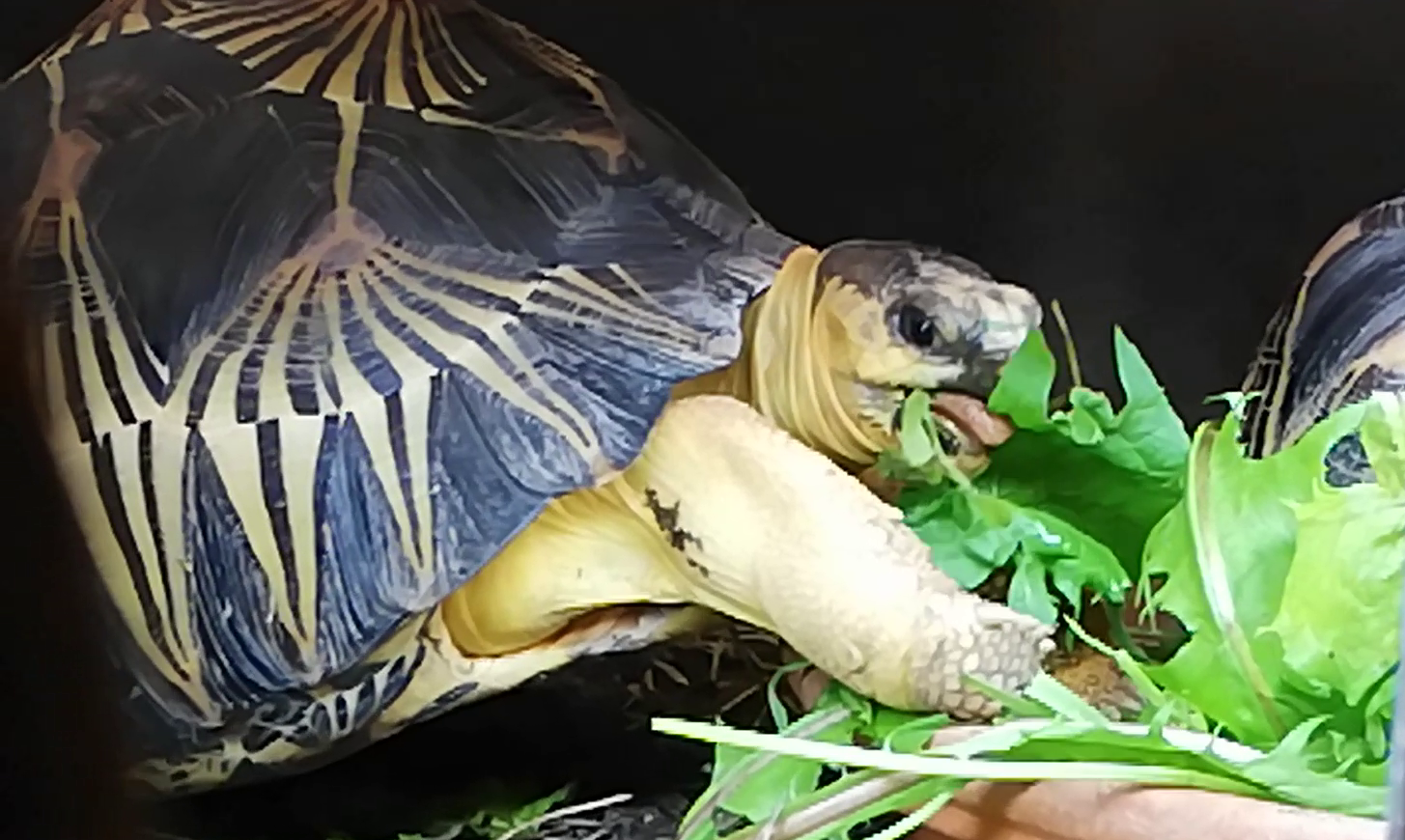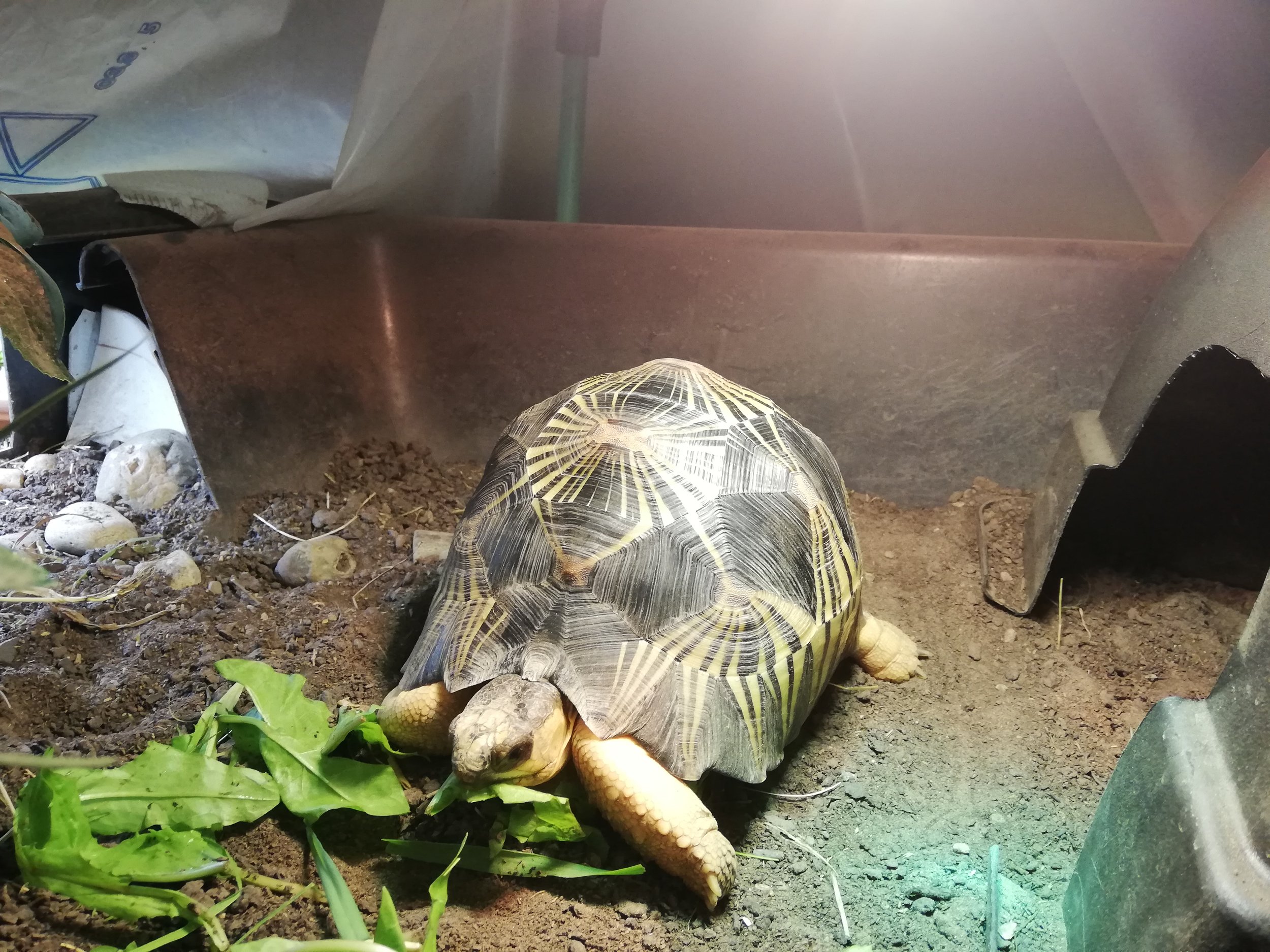
Radiated Tortoises
The radiated tortoise (Astrochelys radiata) is a stunning species revered for its distinctive radiating shell pattern, which resembles the sun's rays. Endemic to the island of Madagascar, these majestic tortoises are a treasure of biodiversity, captivating enthusiasts worldwide with their unique appearance and gentle disposition. In this exploration, we delve into the captivating world of the radiated tortoise, uncovering its natural habitat, remarkable adaptations, conservation status, and the importance of protecting this iconic species.
Habitat and Distribution:
Radiated tortoises are primarily found in the arid and semi-arid regions of southern Madagascar, where they inhabit dry scrub forests, thorn brush, and coastal dunes. These tortoises are well-adapted to their environment, with their high-domed shells providing protection from predators and serving as a reservoir for moisture during periods of drought. Despite their ability to withstand harsh conditions, radiated tortoises are vulnerable to habitat loss due to deforestation, agricultural expansion, and illegal collection for the exotic pet trade.
Distinctive Features:
One of the most striking features of the radiated tortoise is its beautifully patterned carapace, characterized by bold yellow lines radiating outward from the center of each scute. This intricate design not only lends the species its name but also serves as camouflage in its natural habitat, blending seamlessly with the dappled sunlight and dry vegetation. Radiated tortoises exhibit sexual dimorphism, with males typically being larger in size and possessing longer tails than females.
Behavior and Diet:
Radiated tortoises are herbivores, feeding primarily on a diet of grasses, leaves, flowers, and succulent plants. They are crepuscular and diurnal, meaning they are most active during the early morning and late afternoon hours, retreating to the shade during the hottest part of the day. Despite their slow-moving nature, radiated tortoises are known for their endurance, capable of traveling long distances in search of food and water.
Conservation Status:
The radiated tortoise faces significant threats in the wild, including habitat destruction, poaching for the illegal pet trade, and predation by introduced species such as rats and feral cats. As a result, the species is listed as critically endangered by the International Union for Conservation of Nature (IUCN). Conservation efforts aimed at protecting the remaining populations of radiated tortoises include habitat restoration, anti-poaching measures, captive breeding programs, and public awareness campaigns.
Captive raised:
In captivity, we need to offer as close to their natural diet as possible by offering them a mix of tortoise-safe weeds and flowers. Their health will suffer if incorrect foods are given and long term your tortoise could suffer irreversible health problems, sometimes even fatal. I sell specially prepared weed and flower mixes for you to grow the perfect blend of food for them. In captivity it is also advisable to offer an environment that is as close to their natural habitat as possible: from UVB, soil, humidity, hiding places, and plenty of space to name a few.
Conclusion:
In conclusion, the radiated tortoise is not only a symbol of Madagascar's rich biodiversity but also a poignant reminder of the urgent need for conservation action. Through collective efforts to preserve their habitat and combat illegal trafficking, we can ensure that future generations have the opportunity to marvel at the beauty of these remarkable creatures. Let us unite in our commitment to safeguarding the radiated tortoise and the fragile ecosystems they call home, preserving their legacy for generations to come.
Juvenile Radiated Tortoise
Baby Radiated Tortoise



